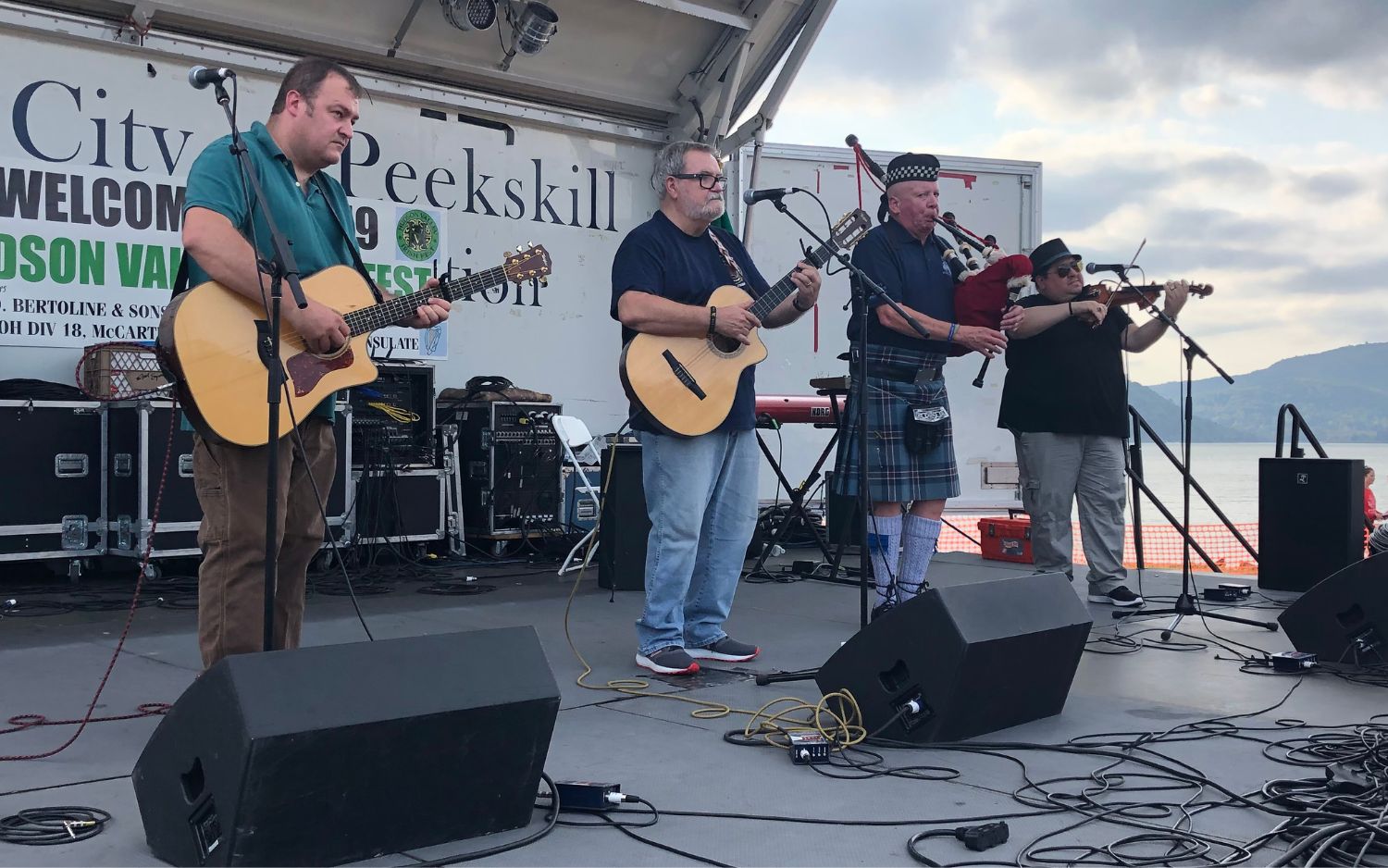-
Photo gallery / N.Y. funeral for forgotten Irish immigrants / Click here
- Video / Cardinal Egan presides at ceremony / Click here
Mourners gathered at St. Peter's Roman Catholic Church on Staten Island Saturday to bury the dead, but this was no ordinary funeral.
Members of the Ancient Order of Hibernians escorted two caskets - one a small, white children's casket with golden angels; the other larger and pearl-colored - into the church as bagpipes played "Amazing Grace."
The two coffins contained the final remains of immigrants who died over 150 years ago.
The remains represent the thousands of unnamed Irish and German immigrants who came to America in the mid-19th century, looking for a new and better life, but instead ended up in quarantine on Staten Island because of severe illness. Many of those confined never made it out, and were buried in mass graves with little fanfare or record.
Workers found the bones during the construction of a new courthouse in St. George in 2000. "We knew going into this project that we were likely to encounter the remains of what had once been a burial ground," said Marc Violette, press officer for the New York State Dormitory Authority, which was charged with the project.
As soon as the existence of a cemetery site was confirmed, a long process of historical excavation and forensic analysis began.
For some, the process seemed to take too long. Lynn Rogers is the Executive Director of Friends of Abandoned Cemeteries, a Staten Island non-profit organization that works to reclaim and honor the long-forgotten, buried dead. Rogers and Bill Reilly, a local member of the Ancient Order of the Hibernians, worked tirelessly to bring the remains back to where they knew they belonged.
“Bill and I went on a crusade," Rogers said, "and this is the result of our campaign, which was over 2000 letters and petitions.” This weekend, their hard work came to fruition, and for Rogers, the day couldn't come soon enough.
At the memorial, attendees from the community, many wearing sashes with the green, orange and white of Ireland's flag, lined the pews along with local politicians, a representative from the German consulate and Irish ambassador to the U.S. Michael Collins. Edward Cardinal Egan, former archbishop of New York, presided over the interfaith ceremony. His sermon emphasized why, more than a century and a half later, it is important to honor the immigrants who had lain neglected for so many years.
"Why do we bury the dead?" he asked. "Because we are burying images of God."
Monsignor James Dorney and Lutheran Reverend Richard Michael also lead the service. "My parents having come from Ireland," said Msgr. Dorney, "made it all the more special that we could remember the immigrants this way, and to make this a celebration that -- how would I put this now-- that brings people together to appreciate all the more a very essential part of our nation's and our borough's history."
Following the service, the gathering moved to nearby Snug Harbor with live Irish music, beer and German bratwursts.
U.S. Congressman Michael McMahon (D- NY), whose great-grandfather emigrated from Co. Clare in 1848, attended the event sporting an American flag pin and a striped kelly-green tie. "It's important to show respect to those of us who came here fleeing hunger and political strife," he said at the church.
Attendee Marguerite Rivas, a Staten Island poet and the granddaughter of Irish immigrants from Co. Meath, wrote her doctoral dissertation on the Quarantine Hospital.
Through her research, she came to feel a kinship with the anonymous souls buried there. "They said goodbye to their loved ones in Ireland, and came here and died, and no one ever knew that they didn't live and thrive in the new world; they just never knew they were even buried in the ground."
For now, the skeletal fragments of dozens of different individuals will be placed in a holding tomb at the local Moravian Cemetery until the courthouse is completed in 2011. A memorial park will be constructed at the original burial site, and the remains will be laid to rest permanently.
"These people came to this country a number of years ago, being told that the streets were paved with gold. When they got here, they found out they were doing the paving," said Kevin Fair, a pipe band major and member of the Ancient Order of Hibernians.
"These unfortunate souls didn't make it all the way to the promised land, and get the reward they looked for, and it's only fitting today, whether they're Irish or some other nationality, that we honor them with a proper burial, for their sacrifice."
Megan Finnegan and Eleanor Miller are both freelance writers based in Brooklyn




Comments